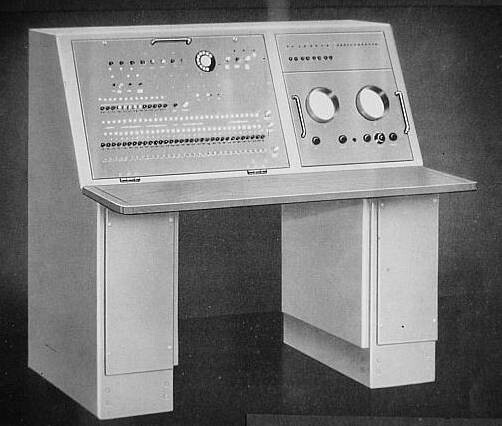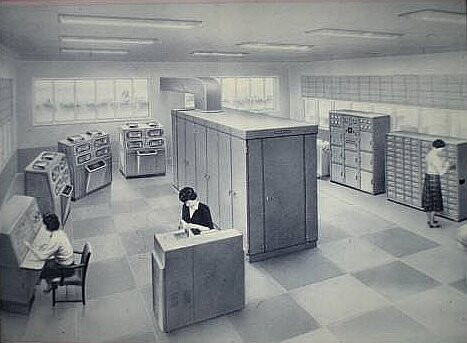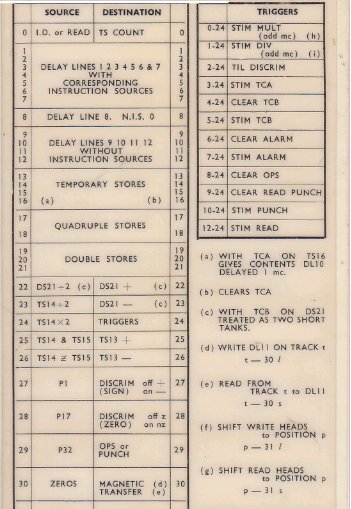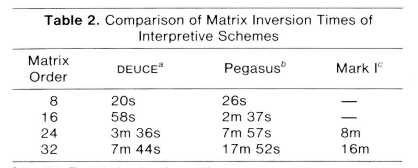First there was the ACE, which was too complex, so before that there was the Pilot ACE, which was too simple. But after these, came the DEUCE - derived, it seems, from the ACE.
Here’s “Raj” Reddy with a first-hand account:
From a paywalled article about programming the Pilot ACE:
When the Pilot ACE turned out to have such an excellent performance, English Electric decided to produce an engineered version for its own use. The first DEUCE was completed in the workshops of the English Electric Nelson Research Laboratories, Staffordshire, in late 1954, and the next two machines were delivered to NPL and RAE in May 1955. The DEUCES were beautifully engineered, in a solid style befitting o ne of Britain’s major manufacturers of heavy electrical equipment. Around this time English Electric was asked by other companies to make further copies, and in due course a full production facility was established at Kidsgrove, Staffordshire. A total of 32 DEUCES were produced.
It was a room-sized computer - indeed, previously mentioned in
A survey of room-sized computers
The console looked like this - photo from Jeremy Walker’s lecture found here in transcript form with links to slides, and here as text-only in pdf:

The DEUCE was a 79kW machine with card punch and card reader, mercury delay lines for “registers”, and a drum for main memory. The drum had moveable heads, which I think was unusual
There were two sticks each of 16 heads, one on each side of the drum. They were driven by moving coils in magnets, with feedback of vertical position by contacts on two arms sliding up and down a linear potentiometer
…
Initially the tip of this arm was just a copper blade. Unfortunately, the knife edge of the copper blade fairly quickly wore and therefore the position was indeterminate. Also, the wear debris shorted out the turns of resistance wire on the pot, so making the positional feedback voltage nonlinear. We eventually found a palladium alloy called JM77 from Johnson Matthey which overcame this problem.
Here’s a “large installation”

There’s a programmer’s reference card, scanned by John Campbell and republished by Mike Jeays, who writes his recollections here:

The binary instruction format was very complex. Each instruction occupied a single row on a punch card. Besides specifying an operation code and the operands, (typically the identity of the delay line from which data was to be taken or where it was to be placed), there were also a ‘wait number’ and a ‘timing number’. The wait number specified the number of clock cycles before the required data would emerge from the delay line, and the timing number was the number of clock cycles to wait before the next instruction would emerge from the delay line containing the executable code. Consequently, optimising a progam meant arranging the instructions in the order that would minimize the clock cycles that were wasted in waiting. This meant in turn that the instructions would not appear on the punch cards in the order in which they would be executed, adding a great deal of complexity form a human point of view.
About performance:

There’s a DEUCE related gallery here - here’s a close-up of that console

Maybe 34 machines installed in total, according to this list

although Martin Campbell-Kelly reckons 32 were produced (Campbell-Kelly, M. (1981). Programming the Pilot ACE: Early Programming Activity at the National Physics Laboratory. doi:10.1109/mahc.1981.10015)
Here’s PJW (Jeremy Walker) at the console

John Barrett maintains the English Electric DEUCE Computer page, including a list of (nearly 500) people organised by site - some 22 sites. And a programming manual:
http://users.tpg.com.au/eedeuce/pm.htm
and a programming handbook too, from RAE in Farnborough, which includes details of “Optimum Programming” - placing instructions in just the right place to minimise latency, and this is well before Mel.
Here’s an extract from “UTECOM – An English Electric DEUCE” by Robin Vowels.
UTECOM (U niversity of T echnology E lectronic COM puter) was the third digital electronic computer built or installed in Australia by September 1956… Manufactured in England by The English Electric Company Limited, the UTECOM was a DEUCE, virtually identical in architecture to Pilot ACE, itself a design by Alan Turing. The chosen name DEUCE (Digital Electronic Universal Computing Engine) was intended to incorporate the word engine in recognition of Charles Babbage and his difference and analytical engines.
More on UTECOM here, by R G Smart - 5 pages, typewritten, a contemporary description and account of applications.
And more on UTECOM here, at the ACS Heritage Project.
This page links to a now unavailable video.
